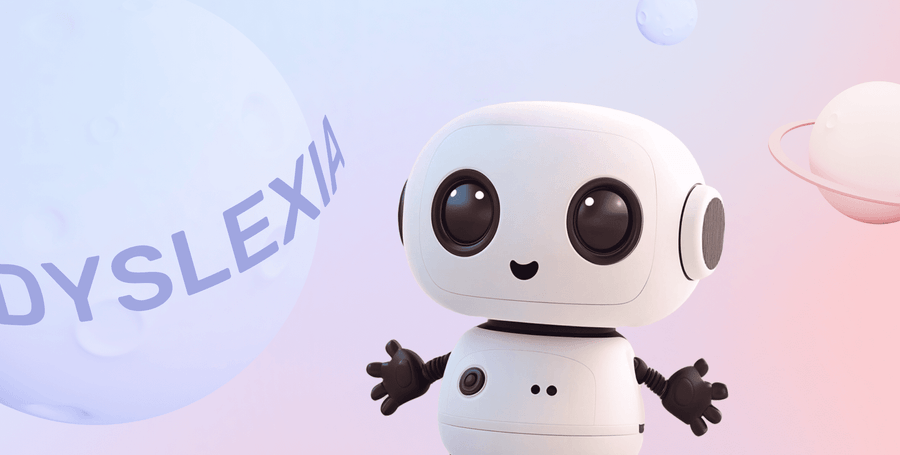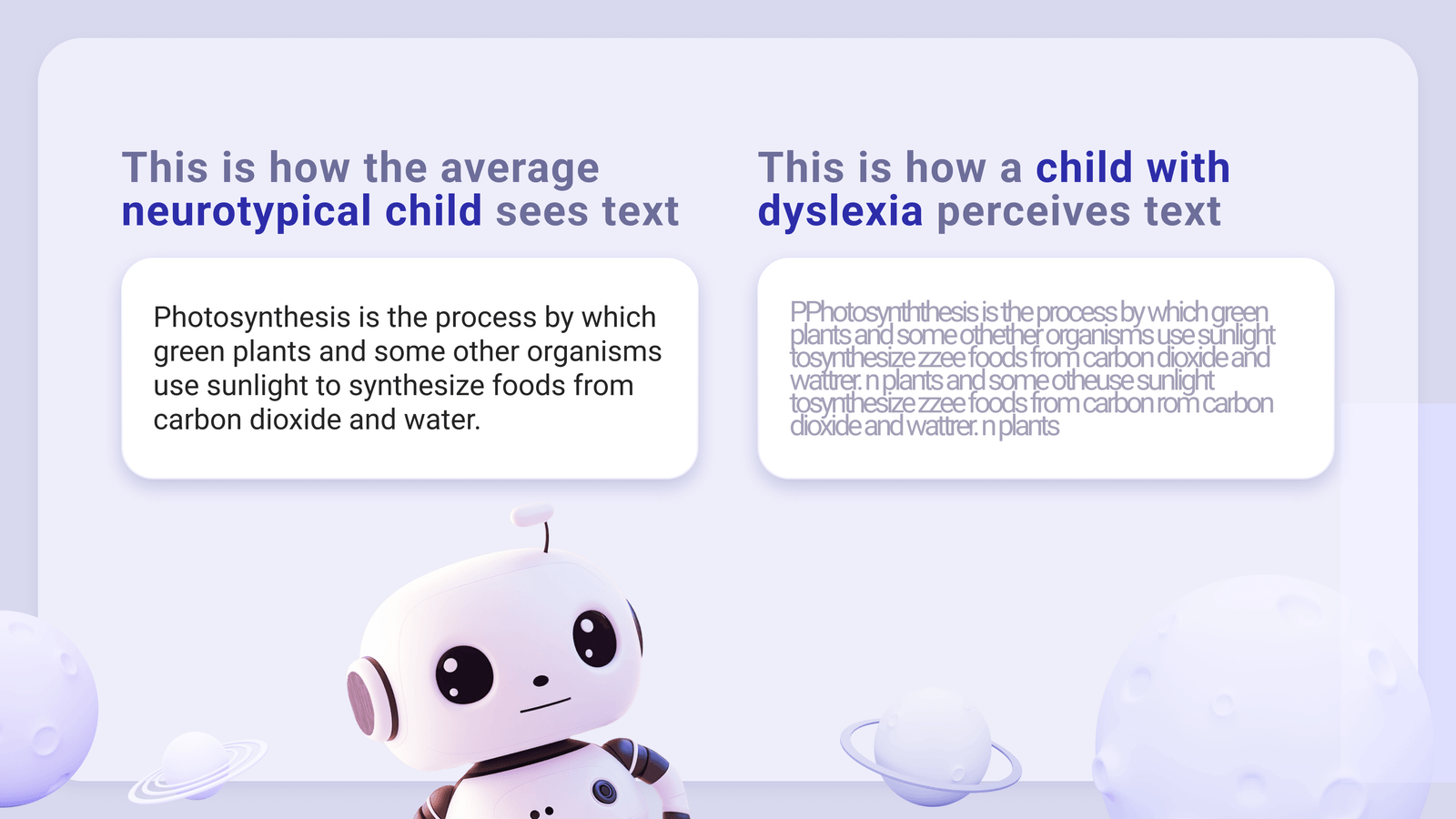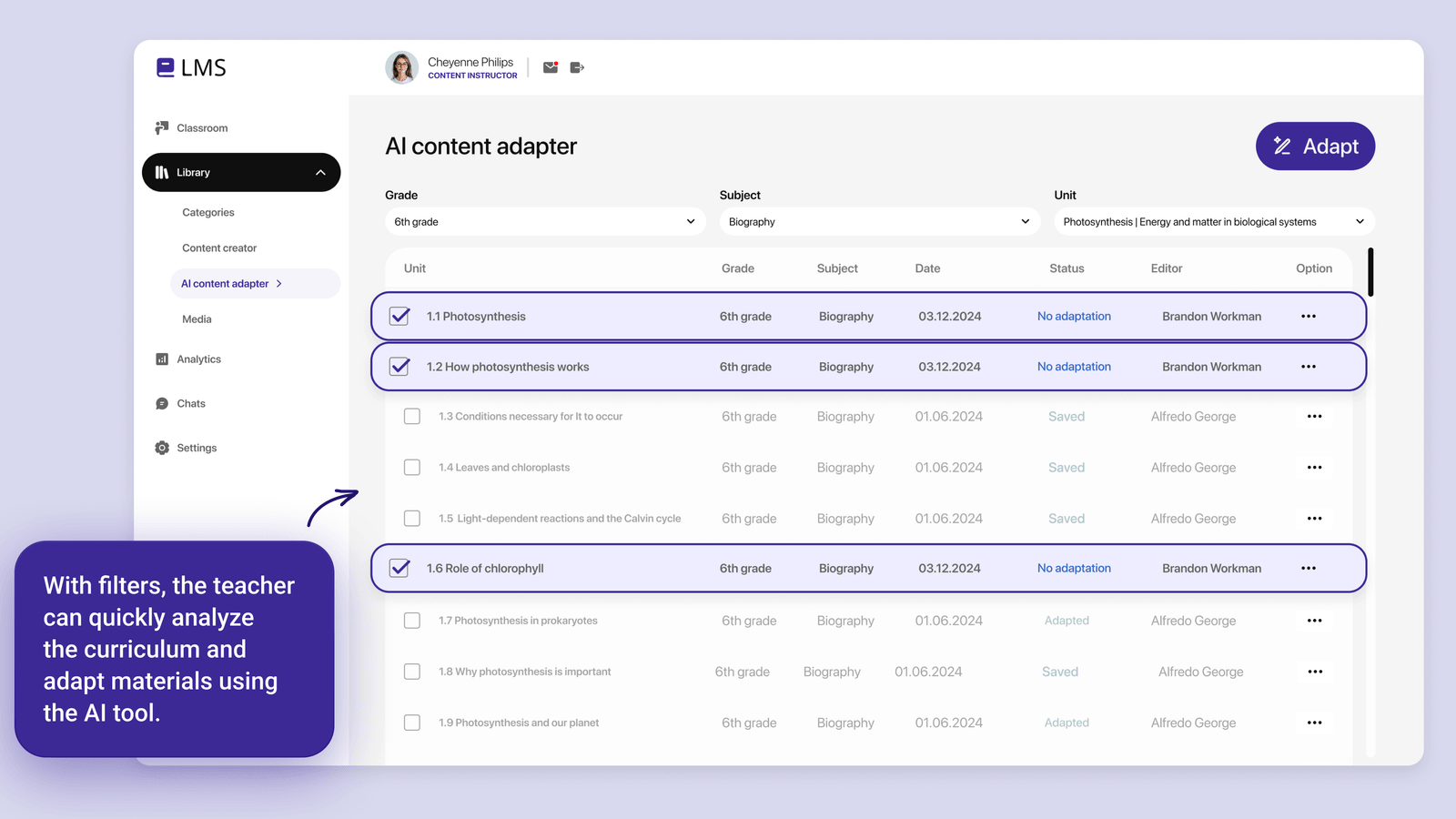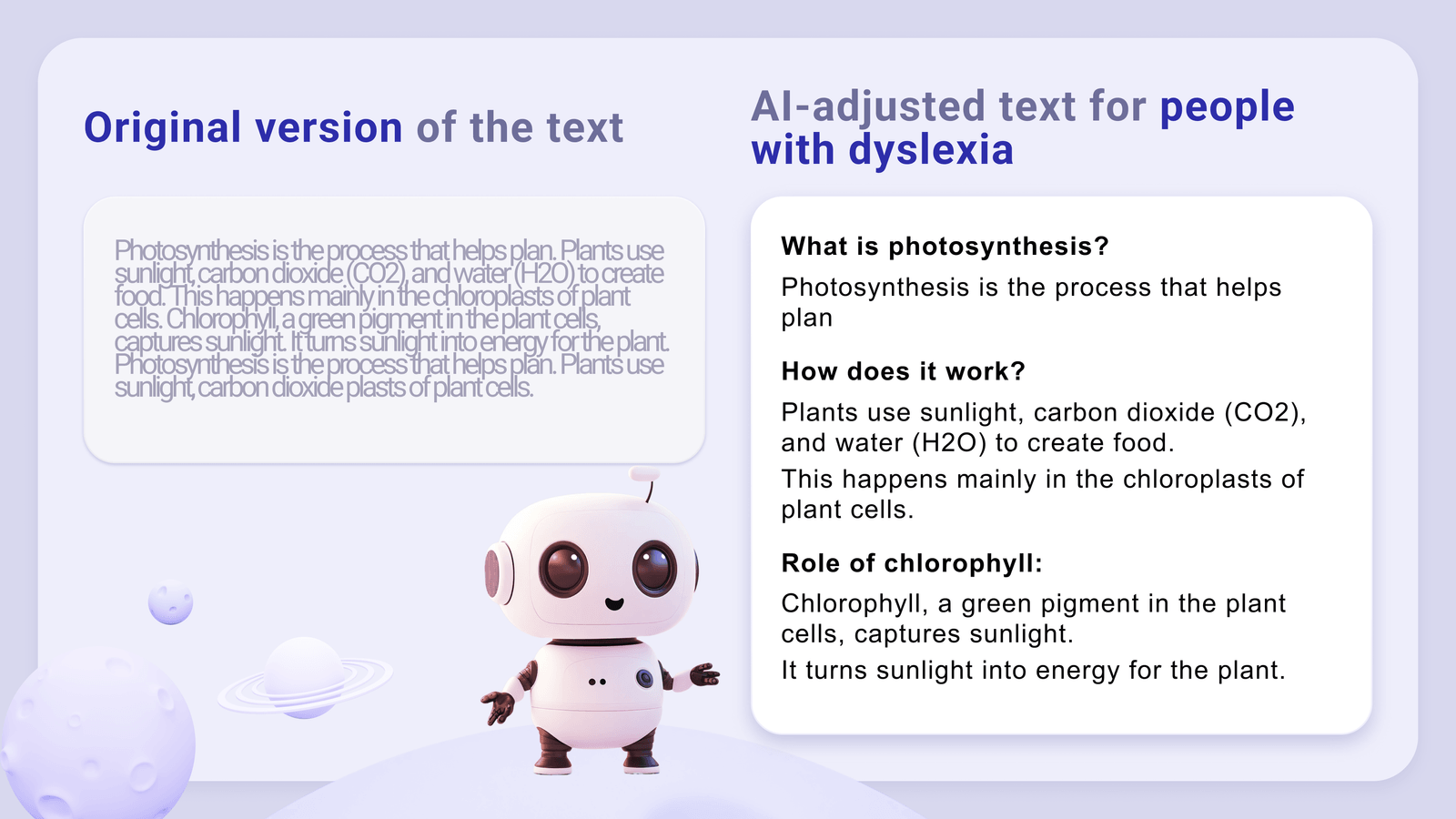
AI adoption of content for learners with dyslexia
The Aristek team developed an AI tool for learners with reading and writing disorders in three weeks to enhance the existing LMS platform.

Key achievements
| 3 | weeks was the project’s timeframe |
| 70% | reduction in time spent on content creation |
| 65% | lower costs for content processing and updates |
Project scope
The Aristek team proposed and implemented an AI-based solution to improve text readability. OpenAI’s LLM capability can also analyze images automatically and alert content creators if they may be unsuitable for individuals with dyslexia.
It took the team of three specialists about three weeks to plan and create the agreed solution.
Here’s a step-by-step description of how this solution was implemented:
The project began with an analysis of the LMS and user needs. The Aristek team worked with educators and accessibility experts to identify key dyslexia-related challenges.
Using a multi-agent system, where multiple AI agents collaborate to analyze and refine content, the LLM validates the material to ensure maximum quality.
The solution was integrated seamlessly into the client’s LMS.
Conducted rigorous testing to ensure usability and effectiveness.






